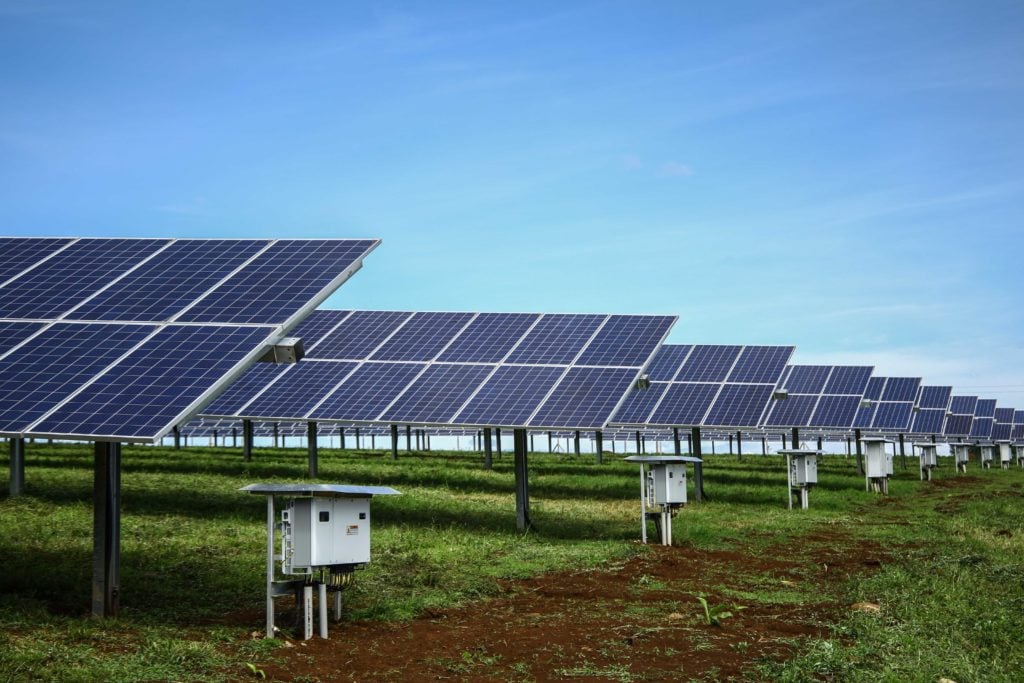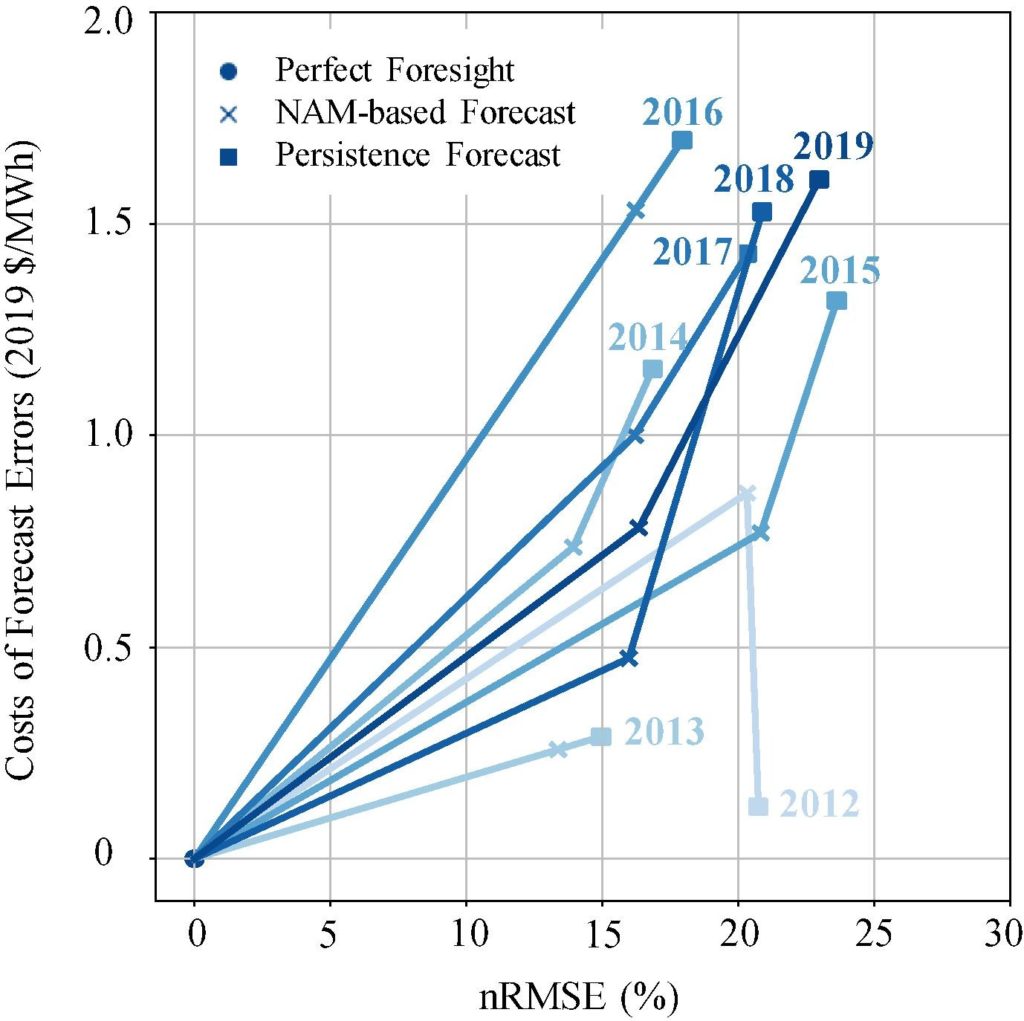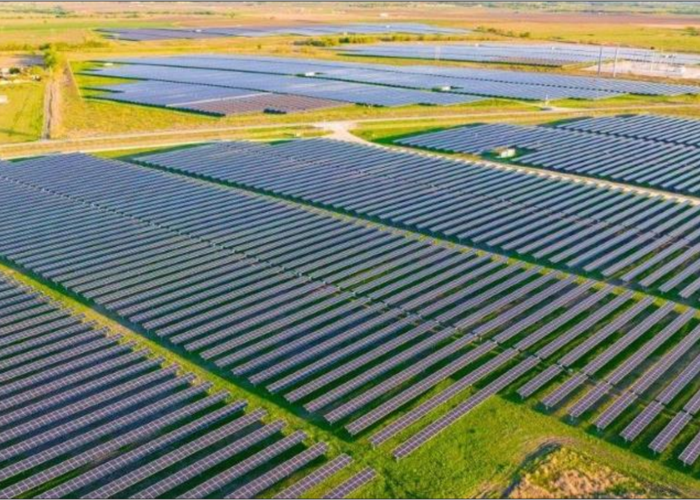
The average cost of forecasting errors in the US is lower than previously thought at less than US$1/MWh, according to a study by Berkeley Lab that employed a new, publicly available method to examine the practice.
The study investigated the costs of day-ahead solar forecast errors across 667 existing solar power plants in the US from 2012 to 2019 located within five independent system operators (ISOs).
Try Premium for just $1
- Full premium access for the first month at only $1
- Converts to an annual rate after 30 days unless cancelled
- Cancel anytime during the trial period
Premium Benefits
- Expert industry analysis and interviews
- Digital access to PV Tech Power journal
- Exclusive event discounts
Or get the full Premium subscription right away
Or continue reading this article for free
It looked at two types of forecasts, a typical and simple “persistence” forecast approach, in which today’s solar profile is expected to repeat exactly tomorrow, and a publicly available numerical weather prediction forecast (the North American Mesoscale Model, or NAM) approach. The analysis was based on hourly real-time and day-ahead nodal prices.
Under the persistence approach, the cost of forecasting errors was set at US$1.5/MWh, 50% higher than when examined under the NAM method. And while these figures are still low relative to the average whole electricity prices of US$20-40/MWh (depending on the year), accuracy in its measurement becomes increasingly important as solar contributes more to the energy mix.
Indeed, “solar forecasting errors become important relative to overall load uncertainty and can add costs to electricity systems,” said the report.
With solar set to account for a larger proportion of electricity generation, the cost of forecast errors might grow. “This concern is simply based on the idea that a portion of solar errors are regionally correlated and thus additional solar deployment could lead to larger absolute forecast errors which might be more costly to address,” warned the report.

The study also found “mixed evidence that error costs were affected by regional solar penetration level”. While the costs of NAM forecasting errors in the high solar regions of California and New England averaged close to US$1/MWh compared with close to US$0/MWh in low penetration regions, the picture was complicated by the fact that California has much more solar than New England yet a similar error cost.
And, underneath these broad regional trends, there was substantial variation in the costs of errors across individual plants and across years.
Meanwhile, the study found that on average there was a “modest value” for participation in day ahead markets, even when accounting for NAM forecast errors. This value varied by year and ranged from -US$0.5 to US$5.2/MWh.
When it comes to storage, the investigation did not assess the costs of forecasting errors for solar-plus-storage hybrid plants, which are expected to grow substantially in the coming years, and is calling on further study into how energy storage system (ESS) deployment could impact forecasting errors.






